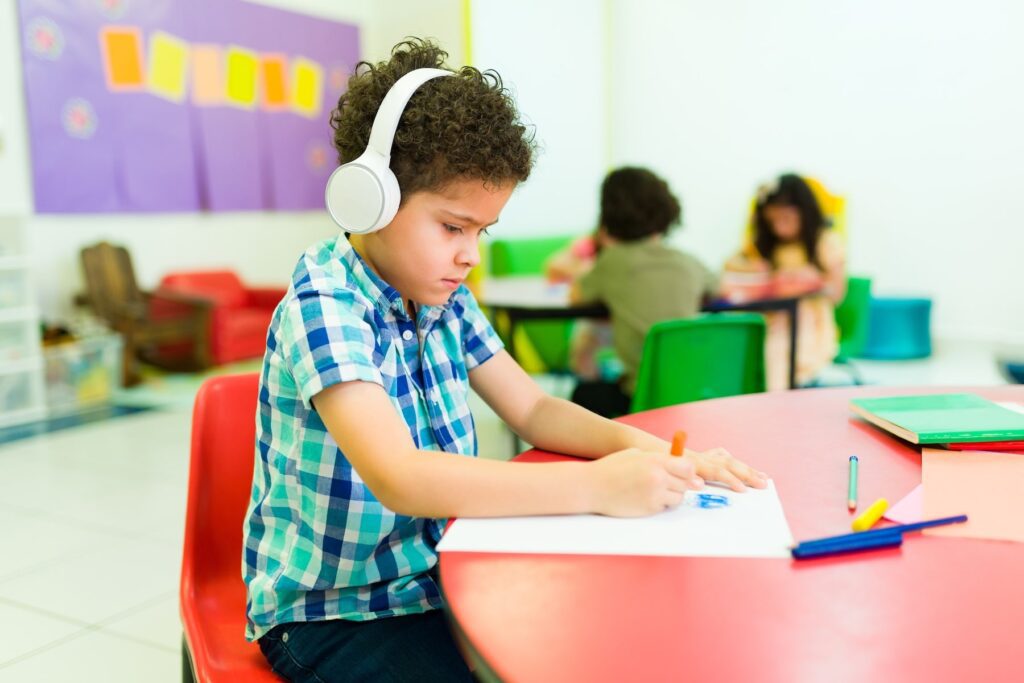Learn How Sensory Sensitivities and Experiences Shape Behavior and Communication
For many children with autism, the world can feel overwhelming. Sounds may be too loud, lights too bright, textures too irritating, and movements too unpredictable. These sensory sensitivities are a core part of autism and can significantly impact a child’s daily life. Understanding sensory processing challenges is crucial for parents, as it helps create a supportive environment where children feel safe, comfortable, and empowered to engage with the world around them.
At Phoenix Autism Center (PAC), sensory-friendly care isn’t just a priority—it’s personal. Founders Justin and Bre Hartman built PAC because of their own experience raising a child with autism and navigating the challenges of sensory processing firsthand. They understand what it means to adapt, advocate, and create spaces that truly support children with autism.
What is Sensory Sensitivity?
Sensory sensitivity refers to how the brain interprets and responds to sensory information from the environment. For many autistic children, this process can be heightened (hypersensitive) or diminished (hyposensitive), leading to unique challenges.
Common Sensory Sensitivity Challenges in Autism
Children with autism may experience:
- Hypersensitivity (Over-responsiveness): Bright lights, loud noises, certain fabrics, or strong smells may feel unbearable.
- Hyposensitivity (Under-responsiveness): A child may seek intense sensory input, such as spinning, jumping, or deep pressure, to regulate their senses.
- Mixed Sensory Responses: Some children may be hypersensitive to certain stimuli while under-responsive to others.
These differences can affect daily activities, making it difficult for children to focus in school, participate in social situations, or even tolerate routine tasks like haircuts and clothing changes.
Managing Sensory Sensitivities at Home
Creating a sensory-friendly home environment can help children feel calm and secure. Here are some practical strategies:
1. Designate a Sensory Safe Space
A quiet, calming area in the home—such as a tent, reading nook, or soft corner—can give your child a place to retreat when they feel overwhelmed. Consider including:
✔ Dim lighting or blackout curtains
✔ Soft blankets or weighted blankets for deep pressure
✔ Noise-canceling headphones
✔ Fidget toys or sensory bins for self-regulation
2. Use Sensory-Friendly Clothing and Textures
Many children with autism struggle with the feel of certain fabrics. Opt for tagless, seamless, and soft clothing to minimize discomfort. If your child dislikes shoes or socks, try compression socks or sensory-friendly footwear.
3. Regulate Sensory Input with Routine
Children with autism often thrive on predictability. Having consistent morning, bedtime, and mealtime routines helps them navigate sensory experiences more comfortably. If a change is coming (such as a doctor’s appointment or trip to a crowded store), prepare them in advance with visual schedules or social stories.
Managing Sensory Sensitivities in Public Spaces
Public environments can be unpredictable, but with preparation, you can help your child navigate new experiences with greater ease.
1. Prepare for Sensory Triggers
Before going to a store, restaurant, or event, consider what might be overwhelming:
- Loud environments? Bring noise-canceling headphones.
- Bright lights? Try sunglasses or hats with brims.
- Crowded spaces? Visit during off-peak hours or choose sensory-friendly locations.
2. Use Sensory Tools on the Go
Carrying a sensory toolkit with fidget toys, chewy necklaces, or a small weighted lap pad can provide comfort in unfamiliar settings.
3. Advocate for Autism-Friendly Accommodations
More businesses and public places are becoming sensory-inclusive—but they need awareness to improve. If your child struggles in a particular setting, ask about accommodations such as dimmed lighting, a quiet space, or special shopping hours for neurodivergent customers.
Here’s How PAC Supports Sensory Processing Challenges
At Phoenix Autism Center, every aspect of therapy is designed with sensory needs in mind. From calm, sensory-friendly therapy rooms to individualized approaches that respect each child’s unique sensitivities, PAC helps children learn self-regulation strategies in a safe, supportive environment.
Because Justin and Bre have personally experienced the challenges of finding the right support for sensory processing, they’ve ensured that PAC is a place where parents don’t have to struggle alone. They believe in empowering families with the tools and knowledge to make everyday life easier—at home, at school, and in the community.
Ready to Learn More?
Sensory sensitivity challenges are deeply personal for many families, but with understanding and the right strategies, children with autism can thrive. By making small adjustments at home, preparing for public outings, and advocating for sensory-friendly spaces, parents can help their children navigate the world with greater confidence.
If your child is struggling with sensory sensitivities, Phoenix Autism Center is here to help. Contact us today to learn how our tailored therapy programs can support your child’s sensory needs and overall development.




